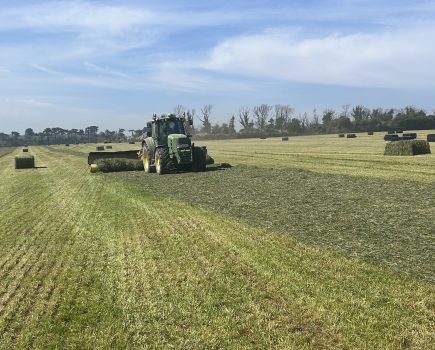As predicted in November, Russia did attempt to close the grain corridor from Ukraine and, indeed, the futures did spike £10 and more in one day. Unfortunately, the increase in the market only lasted for two days, giving no opportunity for ex-farm long holders to really sell anything.
Those who trade futures were able to take advantage of the brief rise. Alas, all of that gain has been given back, but, more concerning, another £20 per tonne has hemorrhaged from the wheat futures since. This may prove to be an over-correction, or it may mean we have a new lower price level in the UK for the time being.
As I have said many times, I try to focus and trade around what are perceived to be known fundamentals of supply, which should be a more exact science post-harvest, and demand, which is always more uncertain. I have tried not to join the many grain traders who have been war correspondents in the past nine months, operating their books in accordance with which way the war is going on the day.
Just to provide a backdrop to the market, you have to draw some conclusion. It’s clear that President Putin cannot win this war, yet he cannot afford to be seen to lose it either. That means it’s going on for a long time, but every war must end some time.
So while the market has almost become immune to some of it, there will still be volatility and uncertainty. However, as is always the case, with any long-term problem or situation, the market finds a way to trade around it. Accordingly, those who were dependent mostly on Ukrainian exports have made other supply arrangements where they can.
Russian exports have hardly changed and they did not need a corridor really. Also, Ukraine has never stopped exporting by rail or road via its western border and via Polish ports on the Baltic. Amongst others, the UK has benefitted by additional sales of wheat to the Mediterranean and Iberian Peninsula, even Ireland.
It is noticeable that when there are grain corridor issues, buyers who always take Ukrainian grain suddenly switch some export demand to the UK and Europe, just to have that extra protection of guaranteed supply. Some are still smarting from having ships marooned in Ukraine ports for six months with no redress.
So it looks like the grain corridor will be extended for another four months at least. Some large importers will not risk putting all their eggs in the Black Sea basket again, so the UK has been able to sell some extra feed wheat coasters for January, February and March.
The AHDB is still talking about a UK wheat crop surplus of 1.9 million tonnes. A lot of the industry think that figure is too high. Anyway, with the UK being the cheapest or second cheapest wheat in the world since harvest, we may have shipped a million tonnes by Christmas. So, if the other 900,000 tonnes is there, with the recent £20 fall in price we must be even more competitive.
We should be able to carry on exporting and could therefore get rid of this surplus by March. If we do, the whole market dynamic changes, for importing feed wheat would be very costly, as it would be now, even if it came from France.
Milling wheat premiums have improved as feed has collapsed, and could be as much as £60 per tonne. I can only repeat; in the light of everything that’s happened, you must have a very good reason if you are not selling your milling wheat at those values.
For interest only: The contract low for the London May futures was £167.95; that was a long time before the 2021 harvest or the war. During the early war it reached a high historical peak of £356.80. Today (18 November 2022) it’s £266. When the corridor was shut, albeit for a couple of days, it hiked to £302! So it’s lost £36 per tonne in the past three to four weeks.
All this demonstrates is that anything can still happen. OK, so we are never going back to the contract high or the low, but with a differential of £188 in the middle, there is still plenty of room to play. Last thought: As Liz Truss found to her cost, you can hold the most steadfast beliefs, based on the best information, but in the end the market decides what will happen, and you cannot buck its trend!







